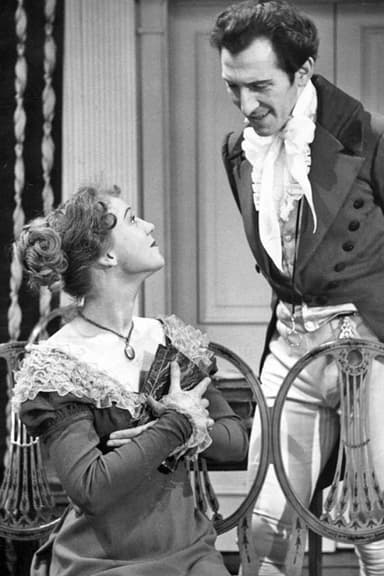
Pride and Prejudice
1967 • Drama
The arrival of a young, well-off, eligible man named Mr. Bingley sends the Bennet household--with five girls of a marrying age--into a tizzy. But it's the introduction of Mr. Bingley's friend, Mr. Darcy, that sets in motion the fate of Elizabeth Bennet, resolved only after a labyrinth of social and personal complexities.
Why you should read the novel
Reading Jane Austen's Pride and Prejudice provides a nuanced and intimate experience that no adaptation, however well-made, can truly match. Her vivid narrations and inner monologues allow readers to immerse themselves deeply in Elizabeth Bennet's perspective, understanding her motivations, fears, and wit in a uniquely personal manner. Austen's prose conveys subtle ironies, social commentaries, and emotional shifts that are often condensed or overlooked in television retellings.
The novel also offers a rich exploration of the period's customs, gender expectations, and class complications, all rendered with Austen’s critical eye and trademark humor. Readers witness not just a romance, but the complexities of family, reputation, and self-discovery in a way that only detailed narration can provide. With every page, the intricacies of the Bennet family and society at large come alive, making the characters all the more relatable and memorable.
Most importantly, the original book invites readers to linger over Austen’s carefully crafted sentences and absorb the era’s language and rhythms, deepening appreciation for literary artistry. Each reread can reveal new layers, witty nuances, and emotional depth—rewards that surpass the rapid consumption of even the most faithful visual adaptation.
Adaptation differences
The 1967 BBC adaptation of Pride and Prejudice, while capturing many key plot points, significantly streamlines the narrative for the constraints of television. Important inner thoughts and nuanced character developments—especially those belonging to Elizabeth and Darcy—are either reduced or portrayed through dialogue and action, sometimes altering their impact and subtlety as intended in Austen’s prose.
The adaptation takes liberties with the pacing, condensing or omitting scenes and sometimes simplifying supporting characters' roles. For instance, lesser-known figures like Mr. and Mrs. Gardiner are given less prominence, resulting in a diminished sense of the wider social environment and familial influences so carefully crafted in the novel. Key events may be added, skipped, or moved for dramatic effect, occasionally changing the meaning behind certain actions.
Dialogues are modernized or abridged, shrinking the distinctive wit and irony for which Austen is loved. The series also relies heavily on visual storytelling to depict emotion and social context, which can either heighten or flatten moments that, in the book, are charged with unspoken tension and irony. This approach changes the experience of engaging with characters like Mr. Collins or Lady Catherine, whose subtleties might be lost when not filtered through Austen’s original narration.
Another notable difference is the focus on romance over social commentary. While the book is as much a critique of class, gender, and social mobility as it is a love story, adaptations often prioritize the central relationship at the expense of these wider themes. As a result, viewers may miss the depth and nuance of Austen’s vision, which gently mocks as much as it celebrates her characters’ quests for connection and happiness.
Pride and Prejudice inspired from
Pride and Prejudice
by Jane Austen















